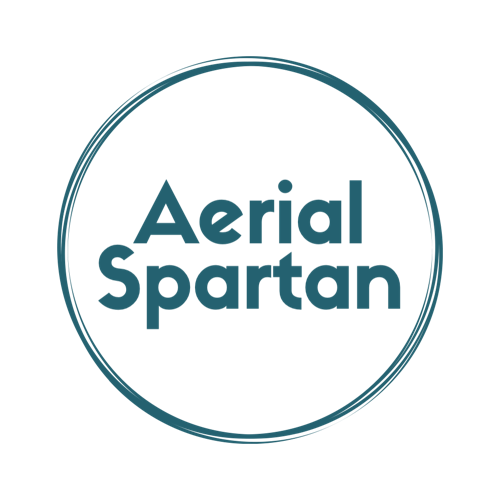
What is Diastasis Recti (abdominal separation) and how to treat it
Diastasis recti abdominis (or DRA) is a condition where the tissue between the straight abdominal muscles separates. Diastatis literally means seperation in Latin and recti abdominis are your abdominal muscles. It is therefore sometimes also referred to as abdominal separation. This condition is most common in pregnant and postnatal women, because the growing uterus stretches the abdominal muscles. However it can also affect every man or woman for various reasons.
I was very careful to not develop diastasis recti during my pregnancy, and yet I am still facing a small gap between my abdominal muscles three months after giving birth. Therefore I am writing this blog post to explain the causes of DRA, how I tried to prevent it and how I am trying to treat it.
Note: I am not a doctor or health professional. Everything in this article is about my personal experience only.
How to diagnose diastasis recti
You can easily test yourself if you have DRA (unless you are currently having a baby belly). Just lie flat on your back and find your navel with your fingers. Press your fingers into your belly slightly below and above your belly button. Now lift your head. Your abdominal muscles should contract and you should be able to feel (or not feel) a small gap with your fingers.
In this Youtube video you can see an example how you can check for DRA.
Causes of diastasis recti
Pregnancy hormones and a growing belly
Diastasis recti abdominis occurs in more than half of all pregnancies. The reason is that you growing baby and uterus expand and put pressure on your abdominal muscles from the inside. The muscles and ligaments are already soft because of a pregnancy hormone called Relaxin. It is absolutely normal and okay for your abs to separate a little bit during pregnancy. However it is important to not aggravate the situation and to rehab it after giving birth. (see below). This is even more important when having several kids, as every pregnancy increases the likelihood of DRA.
Accidents with strained abdominal muscles
The tissue between your straight abdominal muscles can also stretch when you put too much load on it. This sometimes occurs with bodybuilders or power lifters, but also with everyone lifting heavy objects without the right technique (like lifting your kids or heavy furniture)
DRA in newborns
Diastasis recti is also quite common in newborn or premature babies, simply because their abdominal wall is not fully developed. This is not dangerous and most of the time it should go away on its own.
Prevention of diastasis recti
The biggest factor of preventing diastasis recti is to exercise your straight abdominal muscles the right way at the right time.
Always use proper technique
As DRA can also happen by accident, it is important to always use proper technique when lifting heavy objects. Always engage your whole core, and pick an adequate weight. Sometimes also belts and bands can help to stabilize your core, but they should not be used to lift weights that are too heavy otherwise.
Also when you are pregnant and already having a baby belly it is important to not engage your straight abdominal muscles. Therefore always use the right technique when getting in and out of a lying position. Never do it straight as you were used to, because this puts too much pressure on your straight abs. Always get up and down via your side. This means that when getting up, roll onto your side first and then push yourself up. When lying down lye down on your side first.
Train your straight abs before pregnancy, but stop after the first trimester
A strong core is beneficial for a lot of things, like better posture and less back pain. Therefore it is recommended to train your abs before pregnancy, but to stop after the first trimester or as soon as your belly starts to show. This also includes stability exercises like planks or other exercises that require engaged abs. You will see that when doing these exercises your belly will form a bulge outwards which is a general warning sign for DRA. Once your diastasis recti has disappeared you can train your straight abs again.
Train your obliques and transversus abdominus muscles during pregnancy and afterwards
While training your straight abdominals is not recommended later in your pregnancy as it can increase diastasis recti, you can and should train your side abs (also called the obliques) and your transversus abdominus. This is the muscle that spans your tummy horizontally and which is not very well known. But we use it everyday for example when coughing. The best exercises to train it however are breathing exercises that are also useful to recover from DRA after giving birth.
A study of the Columbia University also has shown that doing the right abdominal exercises during pregnancy can reduce the risk of diastasis recti compared to no exercises.
Treatment of diastasis recti
To treat diastasis recti abdominis you should first see a health professional, most likely a physiotherapist. Very often this is done in the hospital after birth or during a postnatal rehab course. In some countries this service is often covered by public or private health insurance.
I was assessed by a physio three days after giving birth, as well by my midwife in the weeks after. In addition I have completed a postnatal rehab class. In total I was given the following exercises to help with my diastasis recti:
- Belly breathing: when lying on our back practice active belly breathing. This means that you lift your belly when inhaling, and pull it towards your spine when exhaling. You can also imagine that the sides of you belly will move closer together, and that your belly button will contract towards your pubic bone.
- Belly breathing advanced: like with the exercise above, start with simple belly breathing. Now do a few sharp exhales while making the sound of the letter “F”. You can also try the letters “P”, “K” or “T”, and contract you pelvic floor upwards and inwards at the same time.
- Leg extensions: Lie on your back with your legs bent. Now slowly slide one leg to a straight position parallel to the floor, and pull it back.
I hope that with all that extra knowledge you will now be able to prevent and treat your diastasis recti. As always please contact a health professional if you have any questions.
